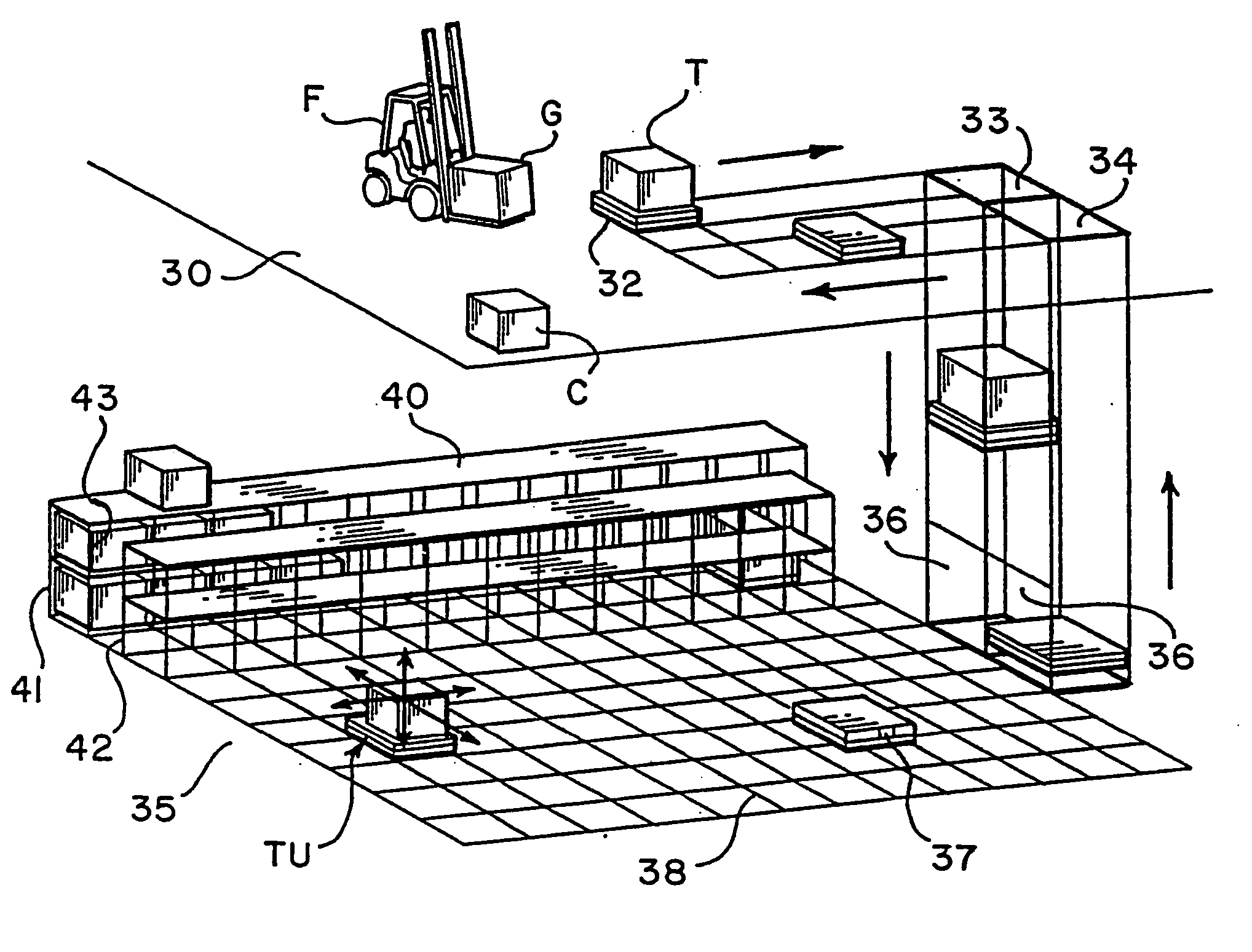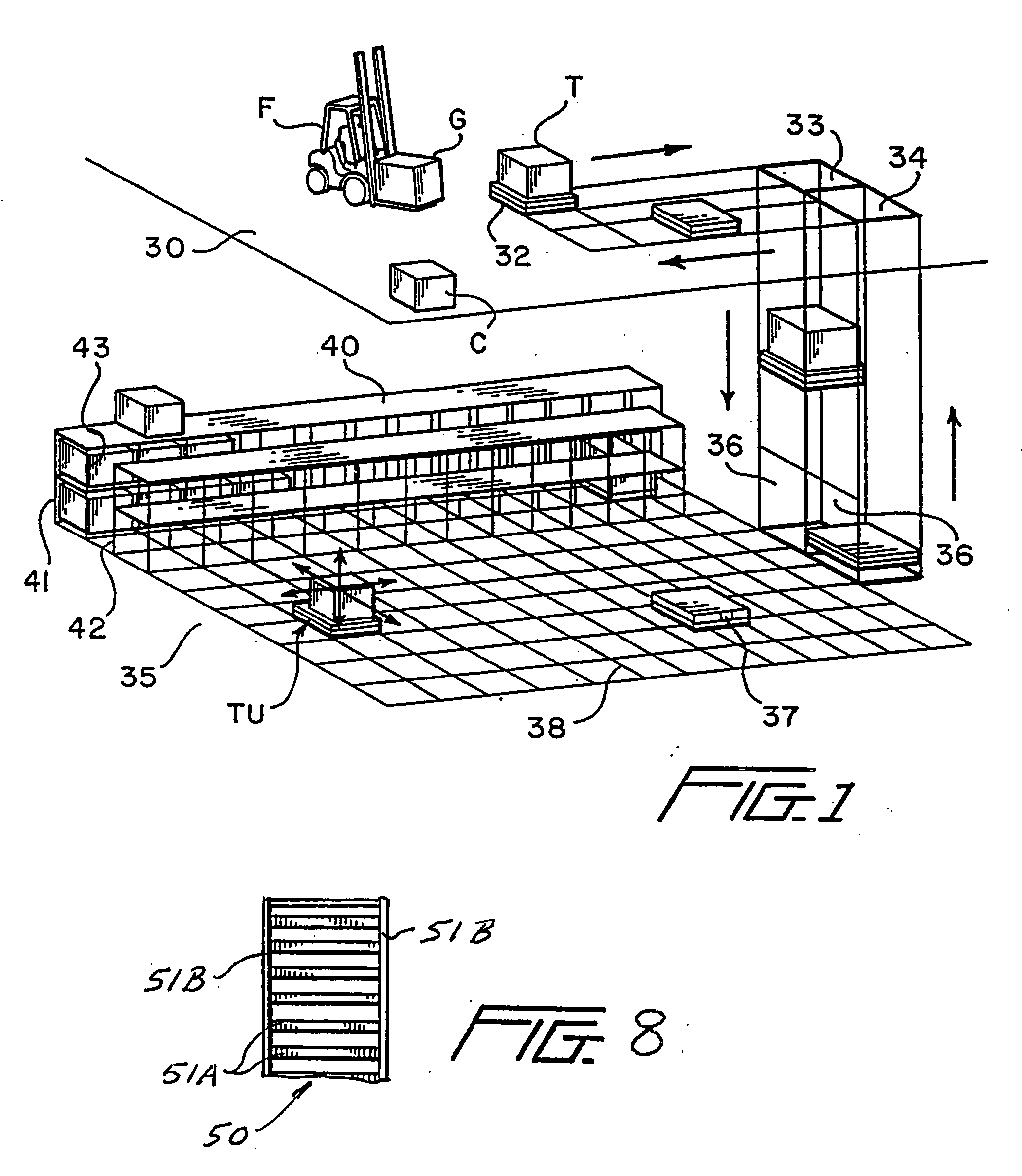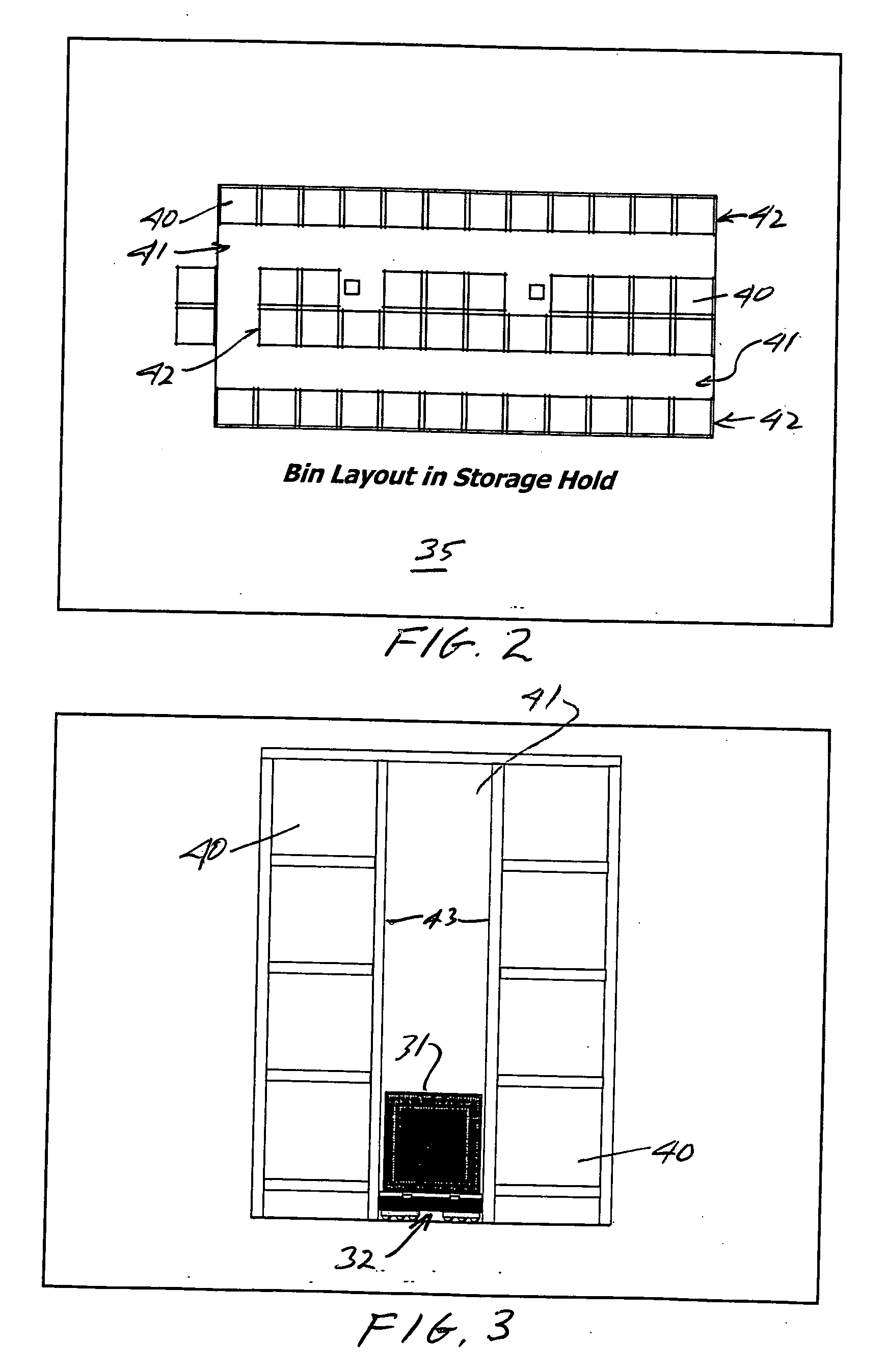Automated material handling system with load transfer vehicles
a technology of automatic material handling and load transfer vehicle, which is applied in the direction of loading/unloading, ship accessories, sustainable buildings, etc., can solve the problems of increasing not only the number of workers or crew members needed, but also the labor intensity and maintenance cost of the above-conventional material handling system
- Summary
- Abstract
- Description
- Claims
- Application Information
AI Technical Summary
Benefits of technology
Problems solved by technology
Method used
Image
Examples
first embodiment
[0080] With specific reference to FIG. 6, load transfer vehicle 32 is disclosed in greater detail. In this embodiment, the vehicle includes a body or frame having an upper surface 70, lower surface 71, front end 72 and rear ends, and opposite sides 74 and 75. A pair of spaced and opposing generally parallel L-shaped tracks 76 are secured to the upper surface on which various storage containers or pallets 31, as previously described, are selectively supported when being transported. As opposed to separate spaced tracks 76, a substantially continuous support surface may be provided along the upper surface of the vehicle. In some embodiments, upwardly extending supports 77 are mounted, such as by welding, to the upper surface of the frame and adjacent the sides thereof. An electronic programmable controller 83 for the vehicle is mounted to one of the supports 77 and may include a number of communication and computer elements for automatically controlling the movement of the vehicle as ...
second embodiment
[0092] vertical drive assemblies 95′ are slightly modified and the gear racks 50 are mounted to opposing side walls of a trunk spaced inwardly from the corners as opposed to the corner mounting described above. With specific reference to FIGS. 6 and 21-23, the modified vertical drive assemblies also include a drive pinion 96′ that is rotatably and slightly floatably mounted between inner and outer support plates 97′ and 98′ of a bracket assembly 99′ so as to be intermediate upper and lower guide rollers 100′ and 101′, respectively, that are also rotatably carried by the bracket assembly. The inner support plate 97′ is also mounted on a movable carriage plate 109′ that is reciprocally mounted within a guide housing 103′ that is fixed to the frame of the transfer vehicle. In this embodiment, a pinion drive assembly 105′ is mounted to the carriage plate 109′ and includes a drive shaft, to which the pinion gear 96′ is secured and that is driven by an output of an electric motor 107′ by ...
PUM
 Login to View More
Login to View More Abstract
Description
Claims
Application Information
 Login to View More
Login to View More - R&D
- Intellectual Property
- Life Sciences
- Materials
- Tech Scout
- Unparalleled Data Quality
- Higher Quality Content
- 60% Fewer Hallucinations
Browse by: Latest US Patents, China's latest patents, Technical Efficacy Thesaurus, Application Domain, Technology Topic, Popular Technical Reports.
© 2025 PatSnap. All rights reserved.Legal|Privacy policy|Modern Slavery Act Transparency Statement|Sitemap|About US| Contact US: help@patsnap.com



